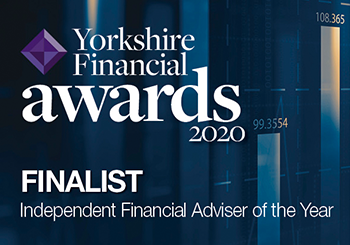Do you have an investment “side hustle”? It should still be part of your financial plan

Even when seeking professional financial advice, many investors are retaining “side hustle” investments. There are many reasons why you may want to take a DIY approach to some investments but it’s still important that they reflect your wider financial plan.
According to a report in FT Adviser, 19% of people that receive investment advice also hold an account with one of the top five DIY investing platforms. Some are even holding positions in speculative or illiquid assets; 9% hold cryptocurrency assets and 4% said they have a peer-to-peer or crowdfunding platform account.
The findings suggest that a significant number of financial advice clients hold assets outside the scope of their relationship with their adviser. There are many reasons why you may do this or are thinking about it. Perhaps you want to experiment with riskier assets with a small part of your portfolio. Or maybe you want to try selecting stocks yourself as your investing knowledge grows.
If you do want to hold some assets outside of those a financial planner manages for you, it’s still important that you consider your financial plan and goals. Taking these five steps can help ensure your side hustle investments still support your wider aims.
1. Ask yourself why you’re investing
First, ask yourself why you want to invest in these side hustles. Do you want to take a punt on an investment opportunity you keep hearing about, like cryptocurrency? Or are you hoping to deliver enough returns that you can retire early? Your goals play a big role in which investments are right for you. Understanding the motivations behind investment decisions can help you analyse whether they’re appropriate. It can also help you see where bias or other factors may be influencing your investment decisions.
2. Understand the investments you hold
The investments you manage with the support of a financial planner are likely to be traditional investments, such as stocks and shares, bonds, or funds. So, you may be considering exploring more unusual investments when taking a DIY approach. It’s essential that you understand the investments you’re making. For example, are they regulated?
Previous research from the Financial Conduct Authority suggests some investors are making decisions without fully understanding their investments or risk. Almost 8 in 10 of those questioned said they viewed some investments as a “safe bet” even though all investments carry some level of risk.
It’s not just the investments you should consider, but the platform you’re investing through too. What would happen if the platform collapsed, would your money be protected?
3. Manage your risk
Risk is a key consideration when making investment decisions. All investments carry some form of risk, and you should ensure you’re taking an appropriate amount of risk when making investment decisions across your portfolio. You may decide to invest in a high-risk opportunity with some of your money, but is this balanced with lower-risk investments?
The risk you take shouldn’t reflect investments in isolation but your financial plan as a whole. If your regular investments are on the cautious side, they can help balance out higher-risk investments you may want to pursue. Likewise, if you have a secure financial safety net you may be in a better position to take these opportunities. Consider how investment volatility or losing your money would impact your lifestyle and goals.
4. Create an investment strategy
It’s never been easier to invest on a whim. You can spot an opportunity and invest within just a few minutes from your phone. However, it can also mean it’s far too easy to make snap investment decisions that you might regret later on. Rather than diving in, spend some time setting out an investment strategy. What do you want to invest in? Will you invest a lump sum or drip-feed? And how long will you hold the investments for?
Remember, investing is a long-term game. You should always invest with a minimum five-year timeframe in mind.
5. Speak to your financial adviser
While you may want to manage these investments yourself, mentioning them to your financial planner can help make sure all of your assets are working towards your goals. If you want to take more risk with a portion of your wealth, it may be appropriate to review other assets to ensure the balance reflects your risk profile. We may also be able to suggest ways to make your money go further, through tax-efficient products, for instance, and, in some cases, point out where investments are not right for you and help you find an alternative.
Working with a financial planner doesn’t mean giving up control of your investment decisions or limiting your options, but it can help you ensure all your investments align to help you towards your financial goals. If you’d like to talk about your investments, please contact us.
Please note: This blog is for general information only and does not constitute advice. The information is aimed at retail clients only.
The value of your investment can go down as well as up and you may not get back the full amount you invested. Past performance is not a reliable indicator of future performance.






